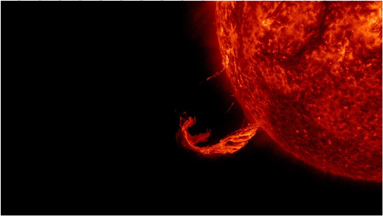
The Sun exploded with a partial halo Coronal Mass Ejection (CME) on January 14 and it hit Earth on January 17, causing an abrupt shift in the Interplanetary Magnetic Field (IMF) near Earth. While it only sparked auroras, stronger eruptions on the Sun have the tendency to damage electronic grids and satellites, and even cause power outages. Scientists are now a step closer to predicting when and where the next eruption of the Sun will happen. They have found new clues in the blazing upper atmosphere of the Sun that could help solve the riddle. They have identified small signals in the upper layers of the solar atmosphere, the corona. These signals can help identify which regions of the Sun are more likely to produce energetic bursts of light and particles known as solar flares. The team from NorthWest Research Associates found the corona produced small-scale flashes above the regions about to flare. These were like small sparklers before the big explosion.
“We can get some very different information in the corona than we get from the photosphere, or ‘surface’ of the Sun. Our results may give us a new marker to distinguish which active regions are likely to flare soon and which will stay quiet over an upcoming period of time” KD Leka, lead author on the new study who is also a designated foreign professor at Nagoya University in Japan, said in a statement.





Be the first to comment